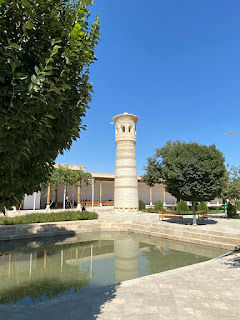Sayyid Amir Kulol

Ooo, yeah. Let's get started, buddy. ☺☺☺ Khuja Sayid Kulol Bukhariy was a prominent Sufi saint and spiritual leader in Bukhara, Uzbekistan. He was born in 1284 CE and spent most of his life teaching and spreading his spiritual teachings throughout Central Asia. He was a disciple of Khwaja Mahmoud Anjir Fagnawi, who was a prominent Sufi saint of his time. Khuja Sayid Kulol Bukhara emphasized the importance of following the Shariah (Islamic law) and encouraged his followers to focus on inner purification and spiritual development through prayer, meditation, and self-discipline. He is considered one of the most important figures in the history of Sufism in Central Asia. His tomb is located in Bukhara and is considered a holy site for pilgrims.
-large.jpg)








